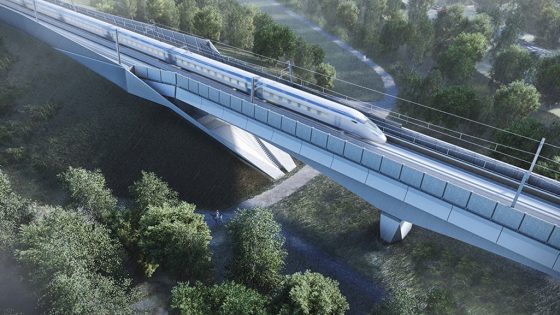A high court judge has dismissed an attempt to halt groundworks at two HS2 sites in Warwickshire.
The Environment Agency (EA) launched legal action last month against HS2, arguing that it had failed to ensure groundworks at the sites would not impact nearby groundwater.
It sought an interim injunction, which would have forced HS2 to pause its groundworks at Glasshouse Wood Cutting and Stonehouse Cutting until the EA had considered the plans or an arbitration process between the two parties had finished.
But High Court judge Justice Joanna Smith threw out the claim on the basis that the EA had not met the threshold for an interim injunction.
The claim will still go to arbitration.
HS2 was planning groundworks at both sites, to be performed by the Balfour Beatty Vinci (BBV) joint venture.
But a civil engineer employed by the EA, Lindsey Sayner, said the groundwater there was at “risk of deterioration and serious damage” if the work was carried out.
The dispute focused on different interpretations of the HS2 Act, which allows bodies including the EA to have a say on whether HS2’s works will adversely affect the environment.
The act allows the EA to impose restrictions on HS2’s plans if it believes they will cause damage to groundwater and surface water in the area.
The EA argued that HS2 needs its consent to carry out the works, and that it had failed to show the works would not affect the “flow, purity or quality of […] groundwater” or affect the “conservation, distribution or use of water resources”.
But HS2 divided its earthworks plan at both cuttings into two stages, arguing that the first “dry dig” stage does not need authorisation from the EA, as it would “avoid interacting with groundwater” entirely.
HS2 based its argument on evidence from Joe Brigly, a water specialist hired to look into the works, who said in evidence that the first stage would not require any groundwater drainage.
BBV also dug trial pits in the area in May to test for groundwater, before it started work at Glasshouse Wood.
The EA said both stages should be seen as one, and that its evidence shows all the work will affect the nearby water sources.
Judge Smith found that it was “wrong to say” that the first stage of groundworks would lead to any water being removed from the area, and threw out the case for an injunction.
She said Sayner, the EA’s civil engineering expert, did not address whether the first stage of groundworks “are likely to affect the flow, purity or quality of groundwater” or whether stopping the works is “necessary” to preserve the natural world itself, or the specifics of the HS2 Act.
But she also said the failure of the two publicly funded bodies to come to a resolution was “extremely unfortunate”.
“In my judgment it is now crucial that the extant issues between the parties are resolved as soon as possible and I would urge both parties to cooperate in seeking an expeditious resolution through the arbitral process,” she added.

